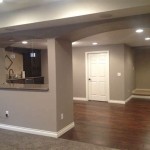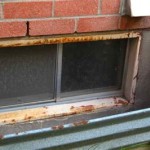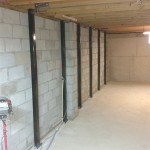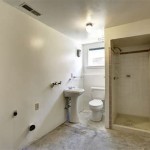What Is the Right Humidity Setting for a Dehumidifier in a Basement?
Basements are notorious for their susceptibility to high humidity levels. This can lead to a range of problems, including mold growth, musty odors, and even structural damage. A dehumidifier can effectively combat these issues by removing excess moisture from the air. While the ideal humidity setting for a basement can vary depending on factors such as climate, ventilation, and personal preferences, aiming for a range of 30-50% relative humidity (RH) is generally recommended.
Understanding the Importance of Humidity Control in Basements
Basements are often prone to high humidity due to their location below ground level. The ground itself can release moisture, and poor ventilation can trap this moisture, leading to elevated humidity levels. High humidity can create a breeding ground for mold and mildew, which can pose health risks and cause damage to building materials. Additionally, excessive moisture can contribute to wood rot, paint peeling, and even structural problems.
Maintaining a relatively low humidity level in a basement is crucial for preventing these issues. A dehumidifier helps by extracting moisture from the air, reducing the overall humidity level and creating a healthier and more comfortable environment.
Factors Influencing the Optimal Dehumidifier Setting
The ideal humidity setting for a basement dehumidifier depends on several factors, including:
Climate
The climate in which the basement is located plays a significant role in determining the appropriate humidity setting. In humid climates, a lower humidity setting may be necessary to effectively combat high moisture levels. Conversely, in drier climates, a slightly higher setting may be suitable.
Ventilation
Proper ventilation is essential for managing humidity in a basement. Adequate ventilation allows for the exchange of air, reducing moisture buildup. If the basement has poor ventilation, a lower humidity setting may be required to compensate.
Personal Preferences
Individual preferences can also influence the desired humidity level. Some people may prefer a slightly drier environment, while others may prefer a slightly more humid setting. It's important to experiment with different settings to find the most comfortable level for you.
Benefits of Maintaining the Right Humidity Level
Maintaining the right humidity level in a basement offers numerous benefits, including:
Preventing Mold and Mildew Growth
Mold and mildew thrive in humid environments. By reducing humidity levels, a dehumidifier helps to prevent these organisms from growing and spreading, improving indoor air quality and reducing potential health risks.
Reducing Musty Odors
Musty odors are often associated with high humidity. A dehumidifier can significantly reduce these odors by removing excess moisture that contributes to their formation, creating a more pleasant and fresh-smelling environment.
Protecting Building Materials
High humidity can damage building materials, leading to wood rot, paint peeling, and structural problems. By maintaining a low humidity level, a dehumidifier helps to protect these materials and extend their lifespan.
Improving Indoor Air Quality
Excess moisture can contribute to the growth of dust mites and other allergens. A dehumidifier can help to improve indoor air quality by reducing humidity levels and creating a healthier environment for people with allergies and respiratory problems.
Important Considerations
While a dehumidifier can effectively manage humidity levels in a basement, it's important to note the following considerations:
Regular Maintenance
Dehumidifiers require regular maintenance, including cleaning the filter and emptying the water collection tank. Failure to maintain the dehumidifier can reduce its effectiveness and potentially lead to problems.
Energy Consumption
Dehumidifiers consume energy to operate. It's important to choose a model with an energy-efficient rating and consider running it only when necessary.
Safety Precautions
Dehumidifiers should be placed on a level surface and kept away from heat sources and flammable materials. It's also important to ensure the dehumidifier is properly connected to a grounded outlet and to unplug it before cleaning or moving it.

What Is The Best Humidity Setting For A Dehumidifier

How To Set Your Dehumidifier Ideal Setting Sylvane

How To Set Your Dehumidifier Ideal Setting Sylvane

Relative Humidity Chart For Ideal In The House

What Is The Ideal Basement Humidity Level Epp Foundation Repair

How To Achieve An Ideal Basement Humidity Of 30 50

Measuring The Efficiency Of A Room Dehumidifier Energy Vanguard

How To Achieve An Ideal Basement Humidity Of 30 50

Dehumidifier Setting Chart What Should Be Set At

What Is The Ideal Basement Humidity Level Epp Foundation Repair
Related Posts







